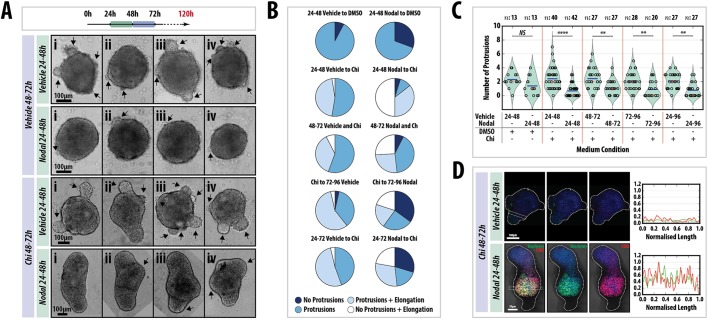Fig. 9.
Tight temporal regulation of Nodal signalling is required for axial elongation and proper axial patterning. (A) Nodal−/− gastruloids pulsed with either DMSO or Chi (48-72 h AA) following a pulse of the vehicle or 100 ng/ml Nodal (24-48 h) and (B) the quantification of morphology. Four examples (i-iv) are shown for each condition. Arrows indicate protrusions. Nodal pre-stimulation suppresses protrusions; Chi stimulation enhances an elongated phenotype but does not suppress protrusions. The wild-type phenotype can be rescued if Chi-treated gastruloids have been previously exposed to Nodal. Addition of Nodal at different time-points is not able to rescue the elongations (left and Fig. S11). (C) The number of protrusions in each condition. Significance was determined using the Mann–Whitney U test with Bonferroni adjustment. (D) Immunofluorescence of Nodal−/− gastruloids treated as indicated and stained at 120 h with Hoechst (blue), for T/Bra (green) and for CDX2 (red). Nodal addition rescues axial patterning. Later addition of Nodal has less of an effect on the patterning (see Fig. S11). Scale bars: 100 μm in A; 100 μm (top) and 50 μm (bottom) in D. Sample sizes (n) are shown above C.

